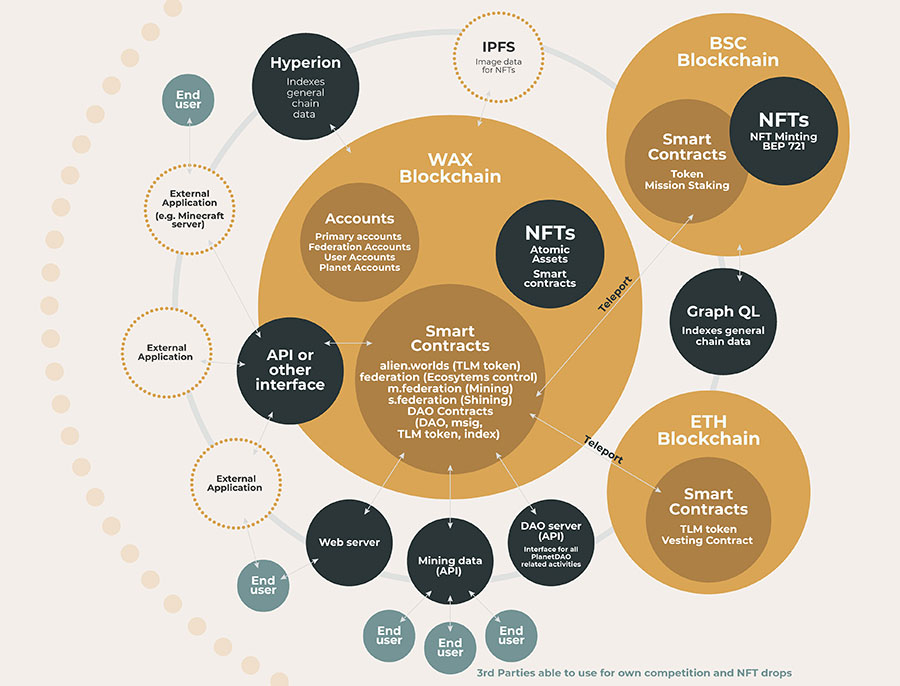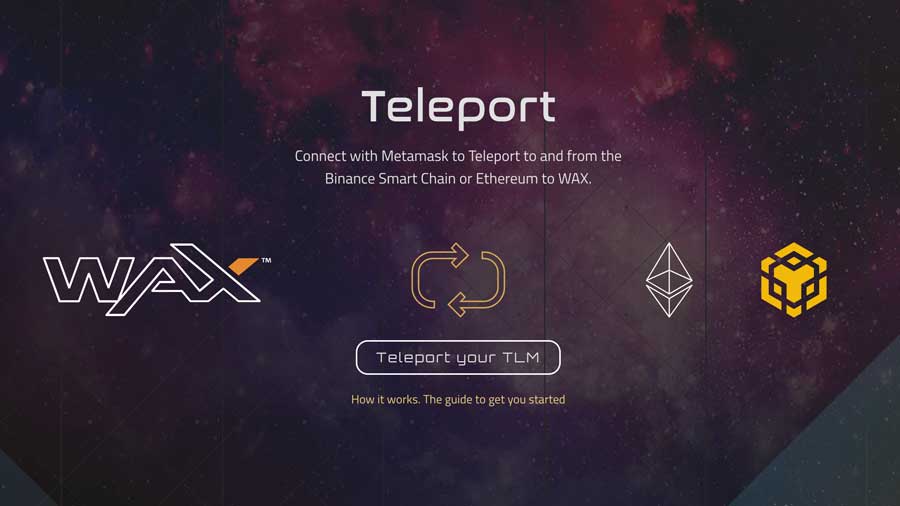The blockchain world moves at an incredible speed with technological breakthroughs being the norm instead of a once-in-a-lifetime event. Therefore it goes without saying that the applications being built on top of these blockchains are moving very fast as well. While blockchain started as a novel technology only being used in Bitcoin, the development of the technology has led to the adoption in almost every industry and this has created a case for blockchains targeted at specific use-cases and industries, in order to better serve specific needs. But this has also led to these blockchains being siloed off from each other. Would it be possible to connect these blockchains?
Europechain is a GDPR supporting enterprise blockchain platform managed and governed by experienced validators registered in the European Union.
Connecting blockchains: the multi-chain future
Imagine a group of small islands dotted around an area of an ocean. Each island has a small settlement of people, going about their business and living their lives as best they know how. But there’s a problem. One island has wood, but little food. They can build rudimentary huts but can scarcely eat. Their closest island has plenty of food though, but no wood, so they lack shelter. A third island has both wood and food, but no hay for their animals. Another island is brimming with hay, but little coal to light fires. The island with the wood does have good coal reserves though. Then, one day, someone has an idea. Why not build bridges connecting all the islands, so all the islanders can share resources! Soon, wood, food, coal, and hay is moving across the islands, and islanders’ business grows tenfold.
Now, imagine each of those islands is a blockchain. Each blockchain hosts a set of tokenised assets, which had hitherto remained confined to their blockchain. Why not build bridges across the blockchains so assets can be shared, just like the islanders did!
By connecting these different blockchains with different protocols, tokens, and use cases it is possible to serve a wider range of companies and people with different needs and requirements. Every blockchain has a couple of aspects in which it excels, and by connecting these blockchains with each other through cross-chain bridges it is possible to, for example, deploy your application on a blockchain that is highly scalable and supports a lot of transactions, release your token on a mature platform which has a lot of funding available, and to create a bridge with another blockchain which has a specific feature which is useful for your platform.
An easy solution for all problems?
While the above description makes it seem like a solution for a lot of problems companies face when using blockchain technology, this is unfortunately not the reality. Similar to building bridges in the physical world, it takes time and careful planning and preparation in order to build a bridge that can handle all the traffic and ensures the safety of the funds locked up in the bridge.
(Public) blockchains are very hard to almost impossible to hack as a result of how they are set up, but these bridges do not have the same kind of security. Just last year on Polygon, an Ethereum sidechain that aims to make Ethereum apps more scalable, a critical bug was discovered which put $850M at risk. These bridges are a critical, yet relatively weak link in any multi-chain environment.
In addition to the security risks, it is also quite costly to build robust bridges between blockchains. A secure bridge capable of holding millions of dollars worth of funds requires a scalable and decentralised infrastructure in addition to specialised knowledge in order to deploy and maintain it.
Building bridges efficiently
While the use cases for these bridges, as well as the challenges that arise when deploying these bridges, are all clear, it makes one wonder if there isn’t a more efficient solution. Bridges in the real world are built and maintained by teams of specialised engineers, so why shouldn’t digital bridges be built and maintained by industry experts?
Zaisan offers a wide range of blockchain solutions, including various cross-chain bridge hosting related services. The benefits of going with a blockchain service provider like Zaisan are numerous and vary depending on the needs of the platform/application.
For newcomers to the ecosystem, it provides a simple and cheap entry to the multi-chain world, allowing them to experiment with all the possibilities and opportunities that come with having an application on multiple blockchains. And for industry-leading applications and platforms, it provides a robust and secure bridge that is capable of supporting the multi-chain needs of their specific application or platform.
In addition to the above benefits, it ensures the bridges are built with the highest diligence and standards and are being monitored and maintained around the clock to prevent any unwanted situations. Furthermore, the decentralised infrastructure capable of supporting up to 5 oracles ensures that there is no single point of failure, yet again adding to the robustness and security of the bridge. Besides this, the bridge remains online even if the platform or application goes down. Lastly, more advanced features such as multi-signature backups or frontend development of the bridge can be offered.
The case of Alien Worlds
Now onto the case of Alien Worlds. Alien Worlds is one of the biggest blockchain games in the world with thousands of players every day. The game features a wide ecosystem that is powered by their main token, Trilium (TLM).
In short, Alien Worlds represents a metaverse powered by NFTs. The NFTs inside the Alien Worlds metaverse are used for a variety of features, such as competing in battles, completing quests inside the game, and to mine TLM.
TLM can also be used for a variety of features, such as planet governance, in which players get to vote on important decisions on the various Alien World planets, as well as buying in-game items, and staking, which allows users to temporarily lock up their tokens on a specific Alien Worlds planet to get specific rewards. A comprehensive overview of the game and its features can be found here.

While the game originated on the WAX blockchain, it quickly took the opportunity to expand to different blockchains for various reasons. The platform itself (and its smart contracts), as well as the majority of the NFTs, and the user accounts run on the WAX blockchain, as the WAX blockchain has free transactions, is very scalable, and has a user-friendly wallet.
Alien Worlds uses the Ethereum blockchain to run various smart contracts related to their token vesting mechanism, as Ethereum has high amounts of capital available and is commonly associated with DeFi related projects and initiatives. In addition to this, Ethereum has a big community and a wide range of (decentralised) exchanges which Alien Worlds can now access more easily as well.
Lastly, Alien Worlds uses the Binance blockchain to run various smart contracts related to the Token Mission Staking aspect of their games. In addition to this, they use the Binance blockchain to mint NFTs and similarly to Ethereum, to access a new (major) community and a new range of (decentralised) exchanges and applications.
The Alien Worlds Bridge set-up
Now it is clear what Alien Worlds does it’s interesting to dive into the specific bridge set-up they use, and some statistics. As described above, Alien Worlds is spread out over 3 different blockchains, namely the WAX, Ethereum, and Binance blockchain. Therefore it is logical that Alien Worlds has a bridge between WAX and Ethereum and WAX and the Binance blockchain. However, there is no bridge between Ethereum and Binance, as most transactions and trading take place on WAX, making such a bridge superfluous.

In order to guarantee the uptime and security of these bridges, Alien Worlds uses a decentralised 3 oracle set-up, which makes the bridges incredibly secure and robust, and guarantees a 99.99% uptime.
Players can access the Alien Worlds bridges through a front-end on the platform/game itself, where they can conveniently swap their TLM across the various chains. However, using a bridge and fully understanding how it works can still be a challenging task for the average player, which is why the Alien Worlds team has provided comprehensive documentation on how you can use the bridge, frequently asked questions, common issues, and more.
So far the Alien Worlds bridges have processed over 100.000 transactions and have millions of dollars worth of Trilium locked up in them in a little less than a year. This proves that the bridges are robust, as well as a core feature of the game.
Conclusion
It is safe to conclude that cross-chain bridges create a lot of opportunities for a lot of platforms and applications, allowing them to access new communities, technologies, and more. However, deploying and maintaining these bridges can be a tricky and costly task. Blockchain service providers such as Zaisan can help in this regard and provide tailored cross-chain bridge hosting services that suit all platforms, ranging from starters to industry leaders.
In the case of Alien Worlds, this has allowed them to expand their game to both the Binance and Ethereum blockchain, giving them the opportunity to make their game more interesting and to access an array of blockchain-specific features.




